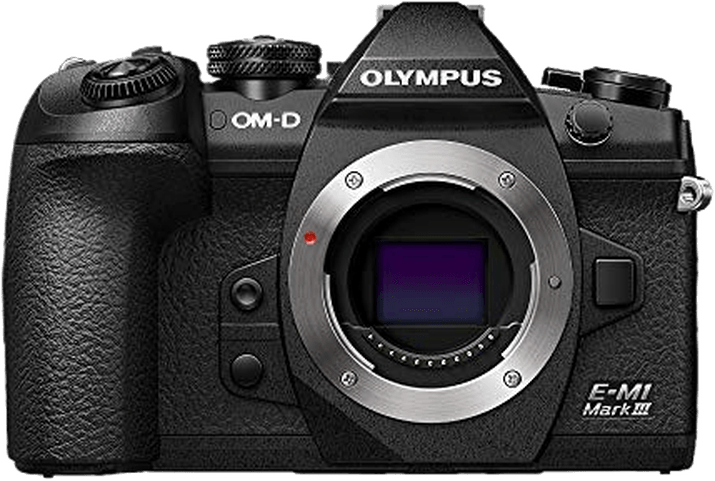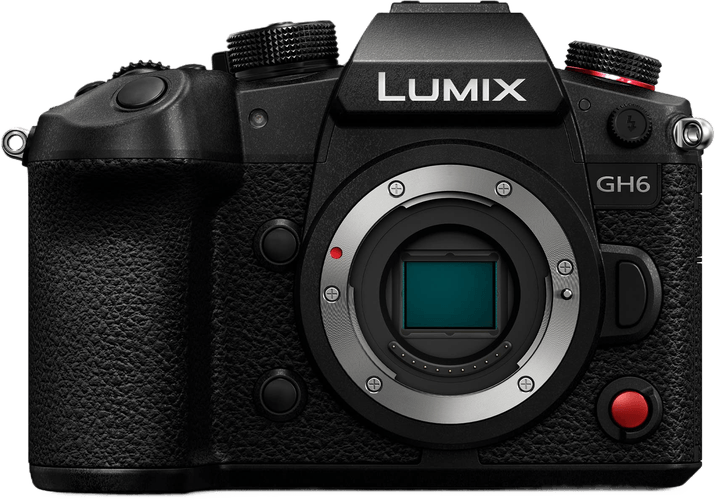Size isn’t everything. And Micro Four Thirds (MFT) cameras from Olympus and Panasonic prove that. MFT sensors might not be as big as their competitors, but they pack a punch. And some Micro Four Thirds cameras are brimming with fantastic features. Good things often come in small packages!
The Olympus OM System OM-1 is our pick as the best Micro Four Thirds camera. It has a revolutionary autofocus (AF) system. It has a full set of hybrid features. And it produces outstanding images. So the OM-1 sets a new standard in MFT cameras.
The Best Micro Four Thirds Camera
Olympus and Panasonic Lumix are the two main Micro Four Thirds camera specialists. Both manufacturers make high-performance hybrid cameras. And they pack each of their MFT cameras with advanced hybrid features. So these MFTs offer some of the best photography and video features of any camera type.
Here’s a quick look at the best Micro Four Thirds cameras. The section after this one will examine each MFT camera in more detail. And if you need more information on MFT cameras, skip to the final section.
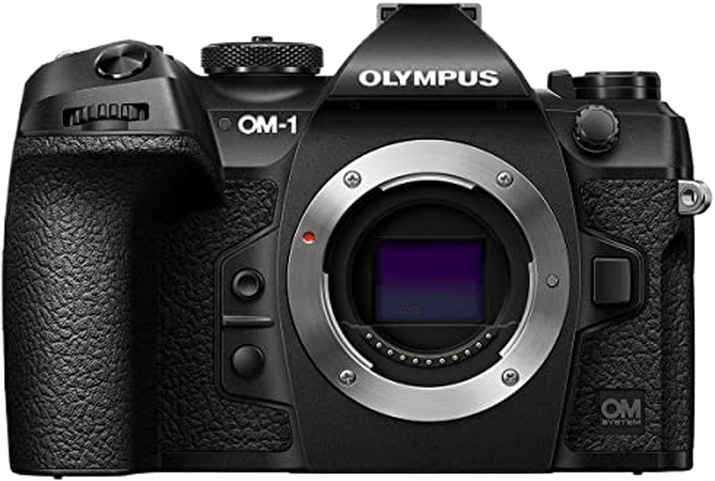
- Powerful High Res Shot mode gives you 50 MP images
- Advanced AF system gives you fast and precise focusing
- Rapid 120 fps burst rate for sequential shooting
- 4K video recording with a 60 fps frame rate

- Powerful 25 MP Micro Four Thirds sensor
- 5.7K video at 60 fps
- 4K slow-motion video at 120 fps
- 100 MP Sensor-Shift high-resolution mode
- Weather-sealed and dual memory card slots

- Handheld High-Res Shot mode gives you 50 MP images
- 4K Photo mode gives you a 30 fps burst mode
- Expandable ISO range with a low option of 64
- Built-in 5-axis image stabilization
- Unlimited 4K video recording at 30 fps
- Completely weather sealed for outdoor shooting
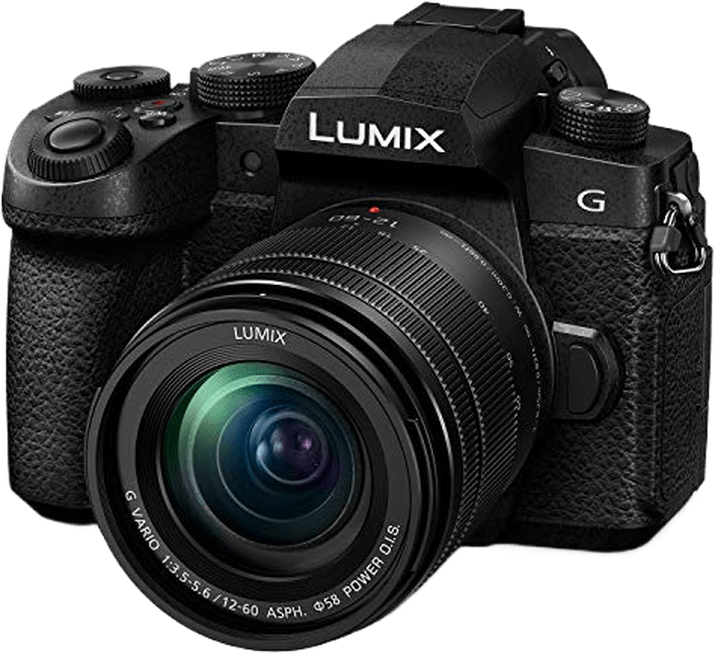
- 5 stops of compensation with the image stabilizer
- Built-in Wi-Fi and Bluetooth connectivity
- Lovely 4K video resolution with excellent frame rate options

- Rich and vibrant image quality
- Excellent video features with various frame rate options
- Reliable image stabilization system for more exposure control
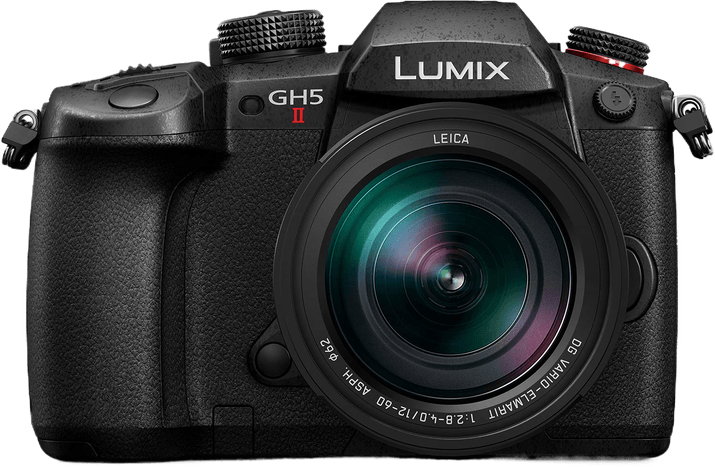
- Brilliant 4K video shot at 60 fps
- No time limit on video recording
- Doubles as a webcam for live streaming
- Weather-sealed for outdoor shooting
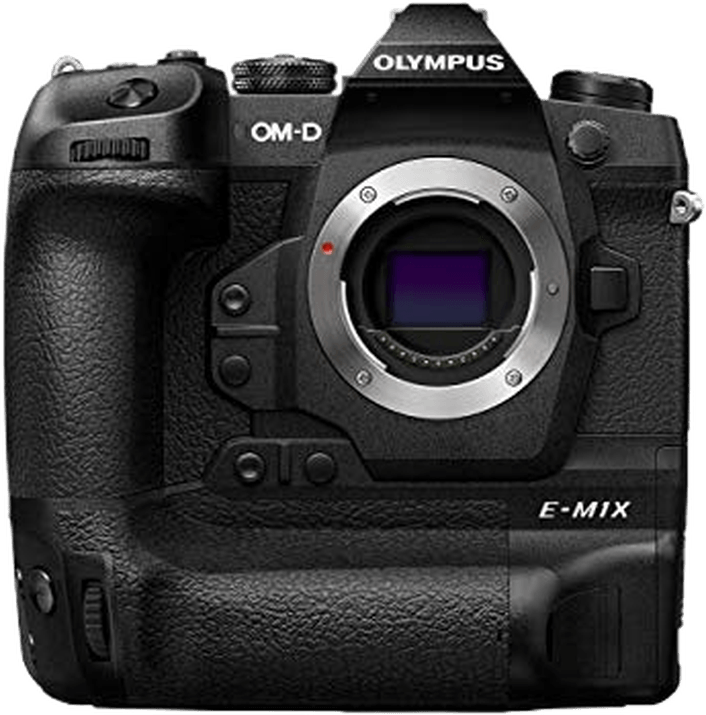
- Fantastic High Res Shot mode gives you 50 MP images
- 80 MP images using the High Res Shot mode and a tripod
- 60 fps burst rate with the electronic shutter
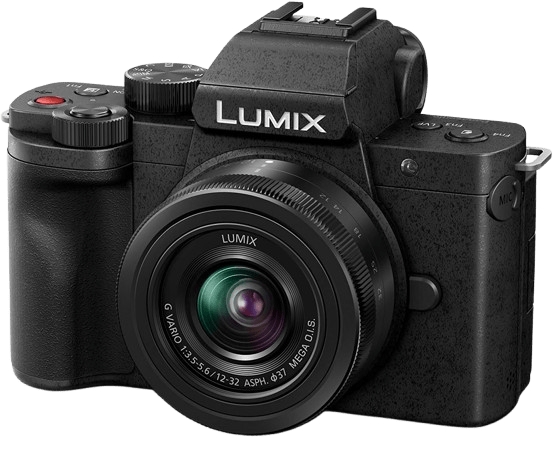
- Face and eye detection AF system
- Built-in image stabilization for photos and videos
- Compact and portable camera body
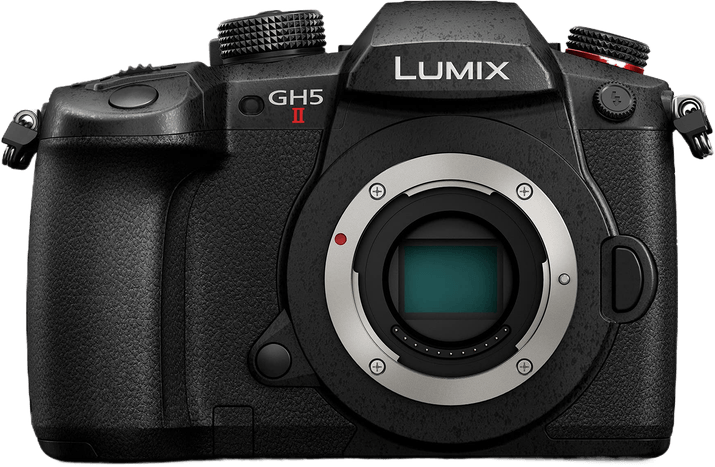
- Image stabilization for precision sharpness
- Sleek and compact camera body
- Lovely 4K video resolution with a 30 fps frame rate
1. Olympus OM System OM-1

| Camera Type |
Camera Type
|
| Sensor Format |
Sensor Format
|
| Megapixels |
Megapixels
20 MP |
| In-body Stabilization |
In-body Stabilization
|
| Autofocus Points |
Autofocus Points
1,053 |
| Frame Rate |
Frame Rate
10 fps |
| Max Video Resolution |
Max Video Resolution
|
| Max Video Frame Rate |
Max Video Frame Rate
60 p
|
| Weather Sealing |
Weather Sealing
|
| Best For |
Best For
Professionals and enthusiasts looking for high-performance in compact package
|
The OM System OM-1 marks a new dawn for Olympus cameras. They’re starting afresh under the name OM System. And the OM-1 is their new flagship camera. Some might see it as a continuation of their previous Micro Four Thirds camera line. But the new advanced features show they’re setting a new standard for MFT cameras.
The MFT sensor has a 20 MP resolution. That’s not exactly groundbreaking. But you get vibrant images with the standard photography modes. The dynamic range is excellent for a sensor of this size.
If 20 MP isn’t enough, you have the High-Resolution Shot mode. This powerful feature captures several images at once and overlays them. This gives you one composite image with a 50 MP resolution. And the image stabilization means you don’t need a tripod.
The AF system is unlike anything we’ve seen on an MFT camera. It uses 1,053 cross-type focus points that give you full frame coverage. It’s high precision focusing with face detection and subject tracking.
The 4K video quality is lovely. And the 60 fps frame rate gives you incredibly smooth footage. You also have slow-motion video modes in Full HD. And the AF and image stabilization both work with photo and video shooting.
We’ve seen fast burst modes in MFT cameras before. But the OM-1 takes it to another level. You can capture the action with a continuous shooting speed of 120 fps. That makes the missable… unmissable!
It’s a durable camera that’s built to last. It’s thoroughly weather-sealed, shockproof, and can work in icy temperatures. It has Wi-Fi connectivity built-in. And busy photographers will appreciate the dual memory card slots. This Micro Four Thirds camera is the total package.
2. Panasonic Lumix GH7

| Camera Type |
Camera Type
|
| Sensor Format |
Sensor Format
|
| Megapixels |
Megapixels
25.2 MP |
| In-body Stabilization |
In-body Stabilization
|
| Autofocus Points |
Autofocus Points
315 |
| Frame Rate |
Frame Rate
14 fps |
| Max Video Resolution |
Max Video Resolution
|
| Max Video Frame Rate |
Max Video Frame Rate
300 p
|
| Weather Sealing |
Weather Sealing
|
| Best For |
Best For
Pro-level multimedia production with incredible photo and video features
|
Just when you think the Micro Four Thirds scene is quieting down, Panasonic turns up the volume once again. The new Panasonic Lumix GH7 is an MFT powerhouse with incredible features for photographers and videographers. It’s on the pricey side, but it’s a true pro-level hybrid camera.
A 25.2 MP resolution is excellent for a Micro Four Thirds sensor. The image quality is genuinely eye-catching, with sharp details and true-to-life colors. You can also expand the ISO to a low 50 setting to maximize the image quality.
The GH7 also has a trick up its sleeve if you need more power. A Sensor-Shift High-Resolution shot mode gives you jaw-dropping 100 MP images. By creating a composite of several exposures, this MFT camera produces images worthy of a medium format camera.
It’s able to do this thanks to the image 5-axis image stabilization system that’s built into the camera. This also allows you to use slower shutter speeds without camera shake, so you get sharper shots in low light.
5.7K video recording at 60 fps puts the GH7 above all other MFT cameras when it comes to video. That’s 10-bit 4:2:2 color, so the footage is vibrant and accurate.
There’s a 4K slow-motion mode with a 120 fps frame rate. And if you want to go even slower, there’s a 300 fps frame rate when you’re switched down to Full HD.
You can also use the camera for high-quality vlogging and live streaming. The rotating touchscreen makes it easy to record yourself, and the body has ports for external audio devices for pro-level sound recording.
USB charging means you can record for long periods without running out of battery. The GH7 also has an internal cooling system that prevents it from overheating when recording high-resolution video.
The Panasonic Lumix GH7 is a brilliant machine for professional content creators and movie makers. It is on the heavy side, but it’s also weather-sealed for outdoor use.
3. OM System OM-5

| Camera Type |
Camera Type
|
| Sensor Format |
Sensor Format
|
| Megapixels |
Megapixels
20 MP |
| In-body Stabilization |
In-body Stabilization
|
| Autofocus Points |
Autofocus Points
121 |
| Frame Rate |
Frame Rate
30 fps |
| Max Video Resolution |
Max Video Resolution
|
| Max Video Frame Rate |
Max Video Frame Rate
120 p
|
| Weather Sealing |
Weather Sealing
|
| Best For |
Best For
Photographers looking for an exciting mid-range camera with advanced photo and video features
|
The OM System OM-5 is a more stripped-back model compared to the OM-1. But it’s still packed with fantastic features for photography and videography. It also has the same stylish retro design, which really adds to the camera’s appeal.
A 20.4 MP resolution is impressive for a Micro Four Thirds sensor, giving you clear, bright images. The native low ISO is limited to 200. But you can expand this to give yourself a 64 ISO for even better image quality.
If 20 MP is not enough, the OM-5 also has a Sensor-Shift High-Resolution mode. In fact, it has two modes. It has a handheld mode that gives you 50 MP images. If that’s still not enough, switch to the 80 MP mode. The only downside is that you need a tripod to stabilize the camera for 80 MP shots.
This mode is only possible thanks to the 5-axis image stabilization mode. As well as giving you high-res shots, this feature also helps in low light. By stabilizing the camera, it allows you to use slower shutter speeds with a reduced risk of blur from camera shake.
A specialist Starry Night focus mode makes astrophotography easy. And the standard AF system is pretty darned good, with eye-detection and subject tracking.
You can also use the camera for High Dynamic Range (HDR) photography. You don’t need specialist photo editing software, as the camera creates a HDR composite in-camera using several exposures. The results are fantastic.
Video makers of all kinds will love the OM-5. You can shoot glorious 4K video with a smooth 30 fps frame rate. There’s a 120 fps option for slow-motion when shooting Full HD.
You can also use it for vlogs and live streaming. A vertical video mode gives you social media-optimized video straight off the bat. USB charging allows you to record without running out of juice. And a rotating touchscreen makes it easy to record yourself.
The OM-5 has a compact body, as every MFT camera should. But it’s also rugged with thorough weather sealing for outdoor use. It’s a versatile camera that’s full of pleasant surprises.
4. Panasonic Lumix G95D

| Camera Type |
Camera Type
|
| Sensor Format |
Sensor Format
|
| Megapixels |
Megapixels
20 MP |
| In-body Stabilization |
In-body Stabilization
|
| Autofocus Points |
Autofocus Points
49 |
| Frame Rate |
Frame Rate
9 fps |
| Max Video Resolution |
Max Video Resolution
|
| Max Video Frame Rate |
Max Video Frame Rate
120 p
|
| Weather Sealing |
Weather Sealing
|
| Best For |
Best For
Beginner to enthusiast videographers and content creators
|
Panasonic Lumix Micro Four Thirds cameras are famous for their hybrid qualities. And the Panasonic Lumix G95D is an excellent example. Not only does this model have great specs for photo and video, but it’s also one of the most affordable MFT cameras you can buy brand new.
The low cost makes it a top choice for beginner photographers. The 20.3 MP sensor delivers consistently excellent photos. And the built-in image stabilization system counteracts camera shake. You can also reduce your shutter speed by five stops with less risk of blurry photos, so your images are crisp and clear.
The video is 4K quality and shoots at 30 fps. Plus, you have the option to switch to 24 fps. You can also speed things up with high-speed video recording, with 60, 90, or 120 fps options. But there is a drop in quality at higher frame rates.
A rotating touchscreen helps you record yourself when vlogging or live streaming. It also has ports for external microphones and headphones, so you can record professional audio with your video.
The Panasonic Lumix G95D has Bluetooth and Wi-Fi connectivity. And all the hardware is safely contained in a rugged weather-sealed body. You can use it for anything from wildlife to street photography or movie making to vlogging.
5. Olympus OM-D E-M10 IV

| Camera Type |
Camera Type
|
| Sensor Format |
Sensor Format
|
| Megapixels |
Megapixels
20 MP |
| In-body Stabilization |
In-body Stabilization
|
| Autofocus Points |
Autofocus Points
121 |
| Frame Rate |
Frame Rate
15 fps |
| Max Video Resolution |
Max Video Resolution
|
| Max Video Frame Rate |
Max Video Frame Rate
60 p
|
| Weather Sealing |
Weather Sealing
|
| Best For |
Best For
Beginners and enthusiasts wanting a feature-packed mirrorless camera
|
The Olympus OM-D E-M10 Mark IV is a fantastic all-rounder. It could be considered the archetypal Micro Four Thirds camera. It’s compact, lightweight, and packed with features. It’s accessible to beginners and enthusiasts. And the price delivers good value for money.
The Micro Four Thirds sensor has a resolution of 20.3 MP, producing fantastic images. And the OM-D E-M10 Mark IV lets you get creative with your photography. There’s a dedicated selfie mode with a flip-down screen. And you get 28 scene modes and 16 artistic filters in the camera. They include film simulation filters for that retro look.
Filmmakers will appreciate the movie specs. The video quality is 4K. And you have a choice of frame rates at that resolution, with 24, 25, and 30 fps available. You can also shoot at 120 fps. But you must sacrifice some quality. So high-speed recording is only possible in HD (720p).
The filters and shooting modes appeal more to content creators. But the OM-D E-M10 Mark IV also delivers for dedicated photographers. The five-axis image stabilization keeps your images sharp. And it gives you more freedom with settings. Plus, it helps maintain high image standards so you can publish your work.
The OM-D E-M10 Mark IV is a crowd-pleaser. It’s a hybrid that produces fabulous photos and videos. And it has features that benefit beginners, content creators, and enthusiast photographers. Its size makes it a good option for street photography. But it’s also capable of portraits, wildlife, and sports photography.
6. Panasonic Lumix GH5 II

| Camera Type |
Camera Type
|
| Sensor Format |
Sensor Format
|
| Megapixels |
Megapixels
20.33 MP |
| In-body Stabilization |
In-body Stabilization
|
| Autofocus Points |
Autofocus Points
225 |
| Frame Rate |
Frame Rate
12 fps |
| Max Video Resolution |
Max Video Resolution
|
| Max Video Frame Rate |
Max Video Frame Rate
30 p
|
| Weather Sealing |
Weather Sealing
|
| Best For |
Best For
Videographers and multimedia creators
|
The Panasonic Lumix GH5 II is another fantastic MFT camera for photos and videos. The specs lean toward the video side of media production. It still performs well as a stills camera. But videographers are likelier to view the GH5 II as the best Micro Four Thirds camera.
4K video quality isn’t groundbreaking by today’s standards. But few cameras can shoot 4K quality at 60 fps. That’s super-smooth footage at full resolution. You also have slow frame rates to choose from. And there’s no time limit when shooting video. So filmmakers have plenty to play with in this MFT camera.
The Lumix GH5 II also lets you live stream. You connect the camera to the Lumix Sync app using the camera’s Wi-Fi connectivity. And then you’re able to stream videos live online. This is an excellent feature for social media creators, journalists, and online teachers. You can also connect to a computer via USB for web conferencing.
A 20.3 MP resolution is solid for a Micro Four Thirds sensor. It’s not groundbreaking. But the GH5 II still produces stunning photos. The dynamic range and low-light performance are impressive. And the images hold up when enlarged or published in print media.
Filmmakers and photographers benefit from the image stabilization system. Its dual system combines sensor-shift and lens-optical stabilization for precision shooting. The result is 6.5 stops of photo and video correction. So camera shake is a thing of the past.
The Panasonic Lumix GH5 II has a durable body and efficient weather sealing. And you can shoot in colder climates as it can handle temperatures down to 14 F (-10 C). It’s a tough and reliable interchangeable lens camera that filmmakers love.
7. Olympus OM-D E-M1X

| Camera Type |
Camera Type
|
| Sensor Format |
Sensor Format
|
| Megapixels |
Megapixels
20 MP |
| In-body Stabilization |
In-body Stabilization
|
| Autofocus Points |
Autofocus Points
121 |
| Frame Rate |
Frame Rate
60 fps |
| Max Video Resolution |
Max Video Resolution
|
| Max Video Frame Rate |
Max Video Frame Rate
60 p
|
| Weather Sealing |
Weather Sealing
|
| Best For |
Best For
Professional who demand high performance from their camera
|
The Olympus OM-D E-M1X is a Micro Four Thirds camera on steroids. It’s aimed at serious photographers who need more power from their MFT cameras. The M1X sacrifices the size benefits of MFT cameras in favor of power and performance. And many photographers are happy with the results.
One reason for the trade-off in size? Olympus believes the M1X is better balanced for larger lenses. There’s a big disparity in weight when using a large zoom lens and a small MFT camera. So the Olympus OM-D E-M1X lets photographers use their larger lens range. So it’s a real benefit for wildlife photographers.
The Micro Four Thirds sensor has a 20.4 MP resolution. That’s more than adequate. But the real power comes from the High Res Shot mode that gives you 50 MP images. And you can even increase that to 80 MP if you use a tripod. Plus, its five-axis image stabilization maintains and improves image quality.
The continuous shooting mode is another triumph for Micro Four Thirds cameras. The mechanical shutter gives you 15 fps, which is enough for most. But photographers wanting more can use the electronic shutter at 60 fps. So it’s ideal for action and sports photography.
The autofocus system is fantastic, using 121 cross-type focus points. And the subject tracking is reliable even with fast action. But autofocus is only available up to 18 fps.
The only other downsides are the price and the size. The M1X body is tough and completely weather-sealed for outdoor shoots. Plus, there’s Wi-Fi connectivity for easy transfer and sharing. So it’s a professional camera that delivers as few other MFT cameras do.
8. Panasonic Lumix G100

| Camera Type |
Camera Type
|
| Sensor Format |
Sensor Format
|
| Megapixels |
Megapixels
20 MP |
| In-body Stabilization |
In-body Stabilization
|
| Autofocus Points |
Autofocus Points
49 |
| Frame Rate |
Frame Rate
10 fps |
| Max Video Resolution |
Max Video Resolution
|
| Max Video Frame Rate |
Max Video Frame Rate
120 p
|
| Weather Sealing |
Weather Sealing
|
| Best For |
Best For
Content creators and vloggers
|
The Panasonic Lumix G100 is the best Micro Four Thirds camera for vlogging or live streaming. Social media is the marketplace for many professional content creators. And Olympus designed the G100 to help you thrive in that online environment.
Most users are attracted to this camera for its video features. It gives you 4K and Full HD video. 4K can run at 24 or 30 fps. And Full HD runs at a smooth 60 fps. Plus, you can use the camera as a webcam using the Lumix Sync app.
The autofocus works well with faces. It detects eyes and maintains focus as the subject moves. That’s ideal for vlogs and live videos. Plus, there’s a selfie mode for self-portraits. And the vari-angle screen and monitor make a vlogger’s life much easier.
The G100 is the smallest camera on the list. So you might be surprised that this tiny camera has a hybrid image stabilization system. This reduces camera shake in stills and videos. And apart from video, it produces fabulous images from the 20.3 MP sensor.
9. Panasonic Lumix GX9

| Camera Type |
Camera Type
|
| Sensor Format |
Sensor Format
|
| Megapixels |
Megapixels
20 MP |
| In-body Stabilization |
In-body Stabilization
|
| Autofocus Points |
Autofocus Points
49 |
| Frame Rate |
Frame Rate
9 fps |
| Max Video Resolution |
Max Video Resolution
|
| Max Video Frame Rate |
Max Video Frame Rate
60 p
|
| Weather Sealing |
Weather Sealing
|
| Best For |
Best For
Travel and street photographers looking for a compact and discreet camera
|
The Panasonic Lumix GX9 is one of the most compact mirrorless cameras. It resembles a point-and-shoot camera more than most Micro Four Thirds cameras. But despite its pocket-sized body, it has plenty of features to get excited about.
With a resolution of 20.3 MP, it outperforms other cameras of this size. Photo details are excellent, and the vibrant colors are true to life. And camera shake and motion blur aren’t a problem. The GX9 uses dual image stabilizers for pristine sharpness in photos and videos.
Many users will choose the Lumix GX9 because of its video capabilities. There’s 4K video at 30 fps. Plus, there’s 4K Photo burst mode. The mechanical shutter gives you 9 fps. But 4K Photo lets you select individual frames from 4K video. And you can use them as full-resolution photos.
The autofocus is sophisticated for a compact camera. And the vari-angle touchscreen and electronic viewfinder are two features creators appreciate. There are some handling issues with the small camera body. But it’s a compact MFT camera, and you’re guaranteed quality.
Why Choose a Micro Four Thirds Camera?
Micro Four Thirds (MFT) cameras are a type of interchangeable lens camera. Unlike compact cameras, you can remove their lenses. And you can change them to other compatible lenses.
They have a smaller sensor than an APS-C or full frame camera. But they have photo and video options. And they have plenty of other features photographers and creators look for in a camera.
They were developed as a bridge between point-and-shoot and larger interchangeable lens cameras. And they offer the best of both worlds. They’re small and unobtrusive. And they still give you the full photography experience.
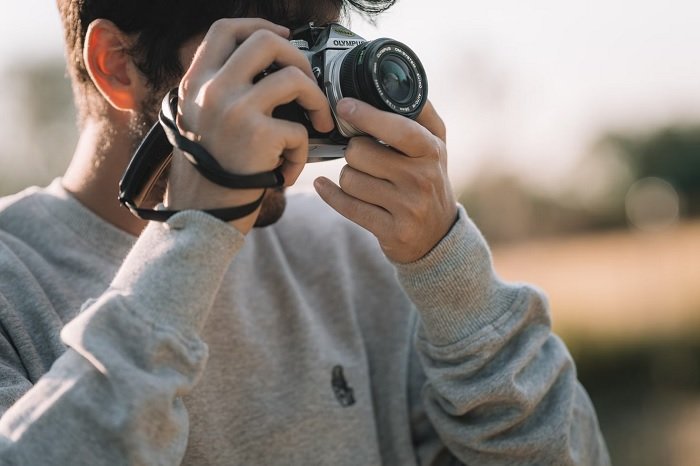
Micro Four Thirds cameras still pack a punch despite their smaller sensor. The image quality is excellent, and the density of the pixels keeps digital noise to a minimum. And there are other benefits to the MFT system.
The first is the smaller size of the cameras. Having a smaller sensor means they need to carry less hardware. The camera bodies are more compact and lightweight. So they are more discreet and easier to carry.
Another benefit is the shorter focal length of Micro Four Thirds Cameras. This results in what is essentially a 2x crop factor for your images. But it also gives you more magnification than other cameras with larger sensors. So you get more telephoto reach from a zoom lens. This is helpful for sports and wildlife photography.
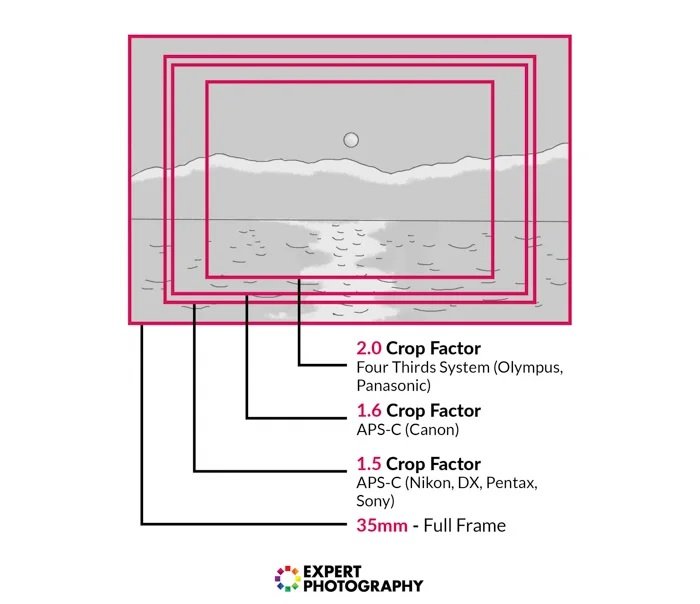
The smaller sensor size also helps you achieve a shallow depth of field. A Micro Four Thirds camera gives you a shallower depth of field using the same aperture on a crop sensor or full frame camera. This benefits portrait and macro photographers who like to use the bokeh effect.
MFT cameras have plenty of other features to get excited about. They have video features for multimedia creators. Some have a rapid continuous shooting speed—good for sports and wildlife photographers. And many have built-in stabilization systems. And their autofocus systems rival their counterparts with larger sensors.
Conclusion
Micro Four Thirds cameras can compete with APS-C and full frame mirrorless cameras. As we’ve seen, they have incredible features. They produce exceptional photos and videos. And everything is in a compact and lightweight package. So they’re credible alternatives to “the bigger boys.”
The Olympus OM System OM-1 is our top pick for the best Micro Four Thirds camera. It’s their new flagship in the MFT division that produces high-resolution images. And it features an advanced AF system, a high 120 fps burst rate, and fantastic 4K video recording.
But all the Micro Four Thirds cameras on this list are worth your consideration. It doesn’t matter if you shoot photos or videos. Micro Four Thirds cameras are the full package for media production.
